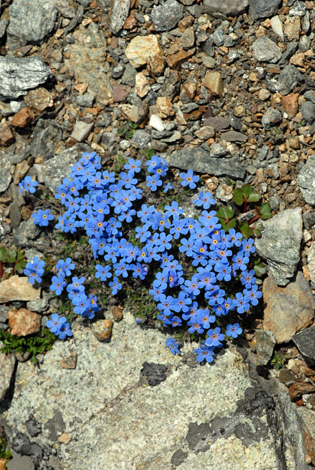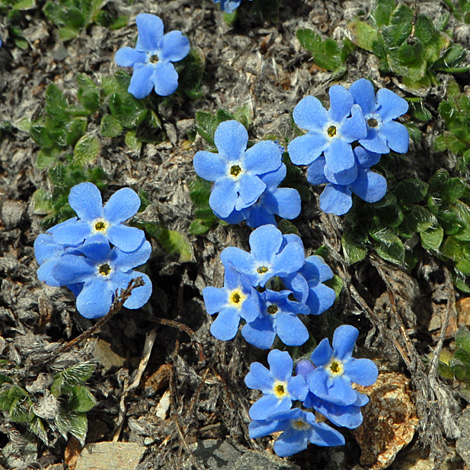Eritrichium nanum King of the Alps


Always a botanical highlight of a Swiss Alpine expedition, this little cushion plant of the Boraginacaea family was growing in the most inhospitable terrain at 10,000 feet in an environment of acid rocks, snow gullies and receding glaciers. At this site on Piz Nair it was accompanied by yellow Saxifraga exarata (White Musky Saxifrage), pink Androsace alpina (Alpine Rock Jasmine), greeny yellow Minuartia sedoides (Mossy Cyphel), white Ranunculus glacialis (Glacier Crowfoot) and deep blue Gentiana bavarica (Bavarian Gentian) with some of the largest blooms on Geum reptans (Creeping Avens) which we encountered during a week in the Alps.
It was an astounding rock garden of all the colours in a stunning setting. In spite of this, other tourists, oblivious to the flowering plants, walked all over them to try to get a view of the distant mountains. Had this been a site in the British isles no-one would have been allowed near it; a bossy warden would have warned of penalties for unauthorised access and we would have taken photos with telephoto lenses only. Yet the plants flourish. Perhaps tourists distribute seed over the plateau and help to retain the diversity of the population.
Eritrichium nanum is a circumpolar alpine which occurs in North American Rockies as well as the European Alps. It can be deep blue, powder blue, pale blue or even white. It was thought to be mostly self pollinated but recent studies have shown that small flies pollinate the plants effectively even at this altitude.
Summit of Piz Nair, near St Moritz, Engadine, Switzerland 10th July 2010
Added on 15th July 2010






